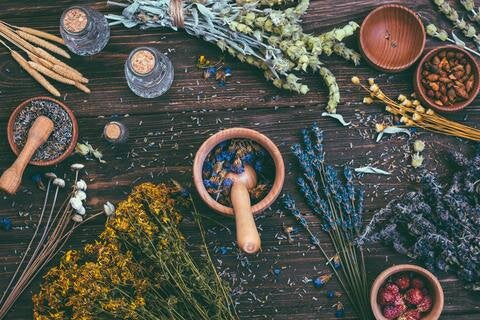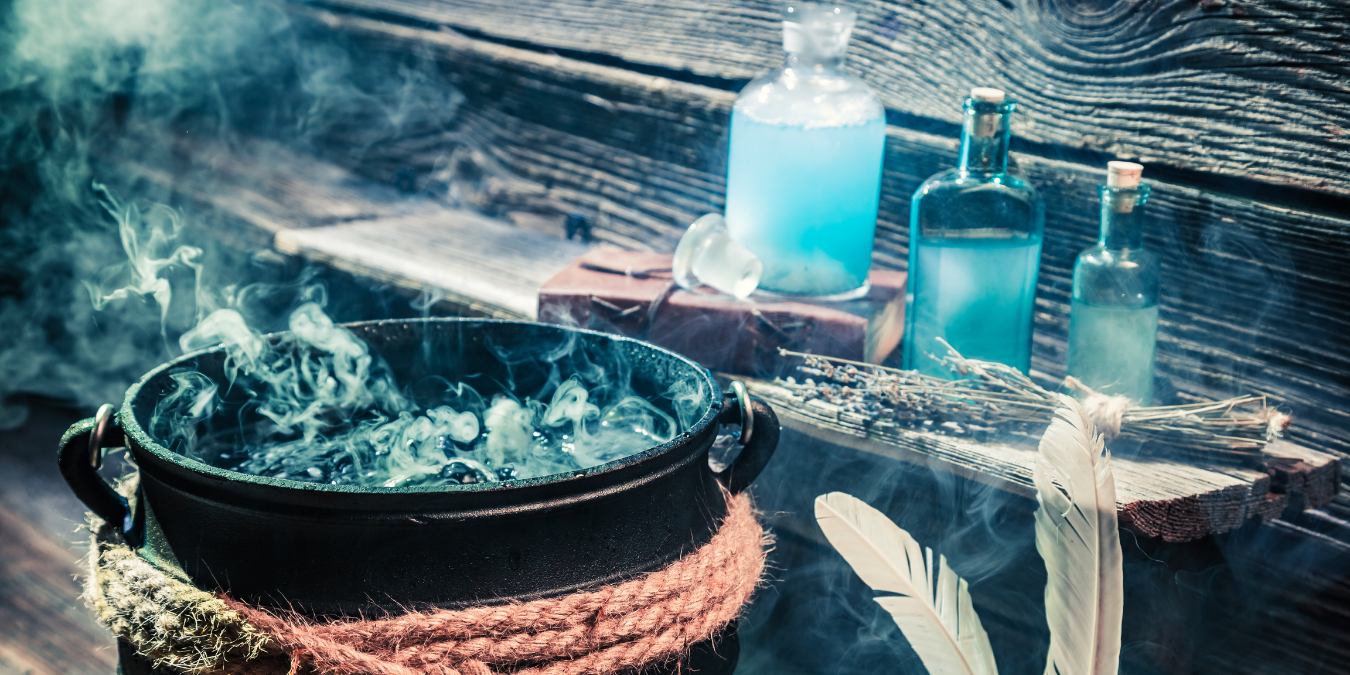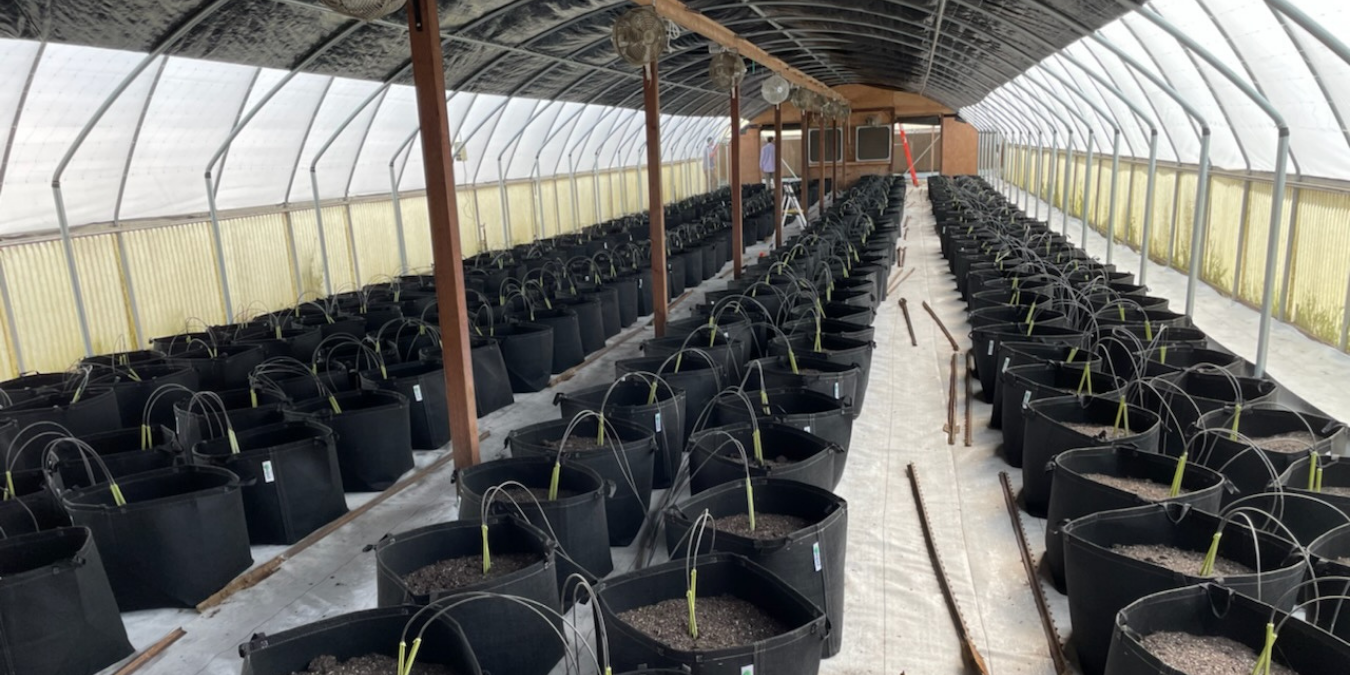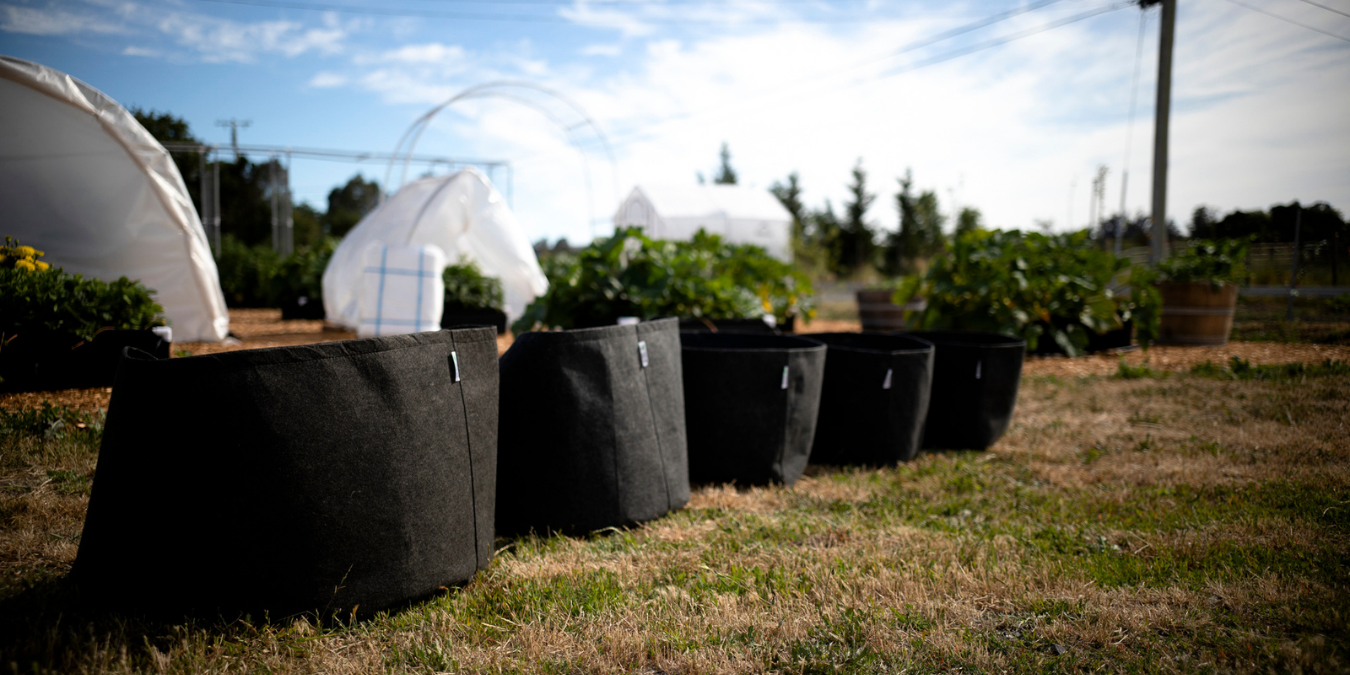Halloween is just around the corner, and with it come monsters and creatures of all kinds. Ghosts, werewolves, vampires, and witches are cropping up in yard and home decorations everywhere.
Witches in particular have been a part of human culture for centuries, and though their supernatural friends haven’t been confirmed, witches did exist. While they may not have managed magic spells, they did create diverse arrays of potions and brews and were often hailed as healers. Before medicine and science, sickly villagers and bedridden kings alike would turn to the wise women of the woods for their understanding of herblore. These witches used their secret knowledge to craft tinctures, salves, and potions to heal ailments of all kinds, but did you know that many of their ancient ingredients can still be found in your garden today?
You don’t have to be a witch to enjoy the benefits of your garden herbs! If you’d like to make your own potions this Halloween (or any time of year), we’ve compiled a list of common ingredients you can find in your garden or at your local home improvement store that wise women traditionally used to make their medicine. Please remember: always consult your doctor before trying a new herb or supplement as some herbs can interact with prescribed medications. This information is not intended as a substitute for medical advice.
Common Potion Ingredients:
Chamomile: A pretty flower known for its daisy-like buds, chamomile is an ingredient known to aid in sleep, pain relief, stress reduction, reducing inflammation, reducing nausea, and fighting infections. It can be brewed into tea and is commonly found in store-bought herbal tisanes.
Dandelion: The lowly dandelion is often seen as just a weed, but wise women know it for its help with healing, specifically acting as a laxative, digestion aid, and anti-inflammatory. Dandelion greens can be eaten in salads, and its flowers and roots can be steeped as a tisane.
Lavender: A pale purple flower often included in garden beds for its beauty, lovely lavender aids in sleep, stress reduction, and headache relief. In addition to brewing it as a tea, witches and wise women would also make spell sachets filled with lavender to place under pillows for good dreams.
Marigold: Also known as calendula, this bright orange flower is a colorful addition to garden beds. It can be used as a tea or to make a wound ointment, and has antibacterial, antiviral, antifungal, anti-inflammatory properties.
Mint: There are many types of mint, and every witch has her favorite, but all strains are known to help with digestion, stomach aches, nausea, and headaches when chewed raw or taken as tea. It also freshens breath!
Nettle: Nettle is another plant often viewed as a garden pest that witches knew to be a blessing in disguise. A tea made from this plant boosts energy, provides pain relief, and can even treat some allergies.
Rosehips: In ancient times, roses weren’t planted just for their beauty. Rosehips, the fruit of the rose plant, can be brewed into tea for pain relief, digestion aid, congestion relief, and are known to have anti-inflammatory, antiviral, antibacterial properties.
Rosemary: You’ll see rosemary in kitchen gardens today for use as a common culinary herb, but most don’t know that this wonder plant can be brewed into tea to help with digestion, memory, concentration, reducing stress, and reducing inflammation.
Sage: Sage is another cooking herb that when brewed as a tea or potion can fight infection, aid digestion, and reduce inflammation. It was often included in salves due to its antibacterial properties, and is frequently used as an incense for smoke cleansing.
Thyme: Another common culinary ingredient, thyme was once used in salves and potions and has many beneficial properties, including fighting infection and clearing sinuses. It has also been discovered to be antibacterial, antifungal, and antiviral.
Potion Blends for Everyday Ailments
These potions, teas, and salves can all be made from either dried or fresh herbs. When brewing herbs as a tea, a good rule of thumb is to brew fresh herbs at double the quantity and steep time as dried herbs. For example, for fresh herbs use two teaspoons of the herb and brew for 10 minutes in boiling water, while with dried herbs you need only one teaspoon of each herb and a brew time of 5 minutes.
 Sleep Potion: Lavender and Chamomile in equal parts brewed into a tea and drunk before bed will aid in falling and staying asleep. Stir in honey in a clockwise motion to set your intent to attract good dreams, and counterclockwise to dispel bad dreams.
Sleep Potion: Lavender and Chamomile in equal parts brewed into a tea and drunk before bed will aid in falling and staying asleep. Stir in honey in a clockwise motion to set your intent to attract good dreams, and counterclockwise to dispel bad dreams.
Stomach Tonic: To relieve a stomach ache, steep a tea of Rosemary, Dandelion, and Rosehips. Play with the ratios of ingredients to get the flavor profile and benefits you want, and if needed add Mint or Chamomile to help reduce nausea.
Headache Elixir: Brew Lavender and Mint in equal parts to help reduce the pain of a headache. Lavender will also aid in falling asleep, and following this potion with a nap is a good way to ensure the headache stays away.
Cold Concoction: A mixture of Marigold (Calendula), Thyme, and Sage can help ease the symptoms of a cold, including sore throat and congestion. Add in Rosehips for an antiviral boost and some extra antioxidants if the illness is more severe.
Please keep in mind that not all herbal remedies are right for everyone! Check with your doctor before making up one of these potions to treat your ills, because they are the wise women (and men) of this day and age.
Herb-gardening is a rewarding hobby that dates back generations, and whether you’re dressing as a witch this Halloween or not, we hope this ancient herbal wisdom helps you find more use for the flowers and herbs you grow in your garden. Make sure your herbs stick around for years to come by caring for them properly! Many of these plants are perennials that will return every year if trimmed back and mulched, while others are easy to seed and re-plant for the following season. And remember, you can extend the life and harvesting period of your herbs by planting them in containers in the spring and bringing them indoors to overwinter. GeoPot Fabric Pots are a perfect potting option for flexible gardening so that you can ensure your plants are getting the best care possible year-round.





